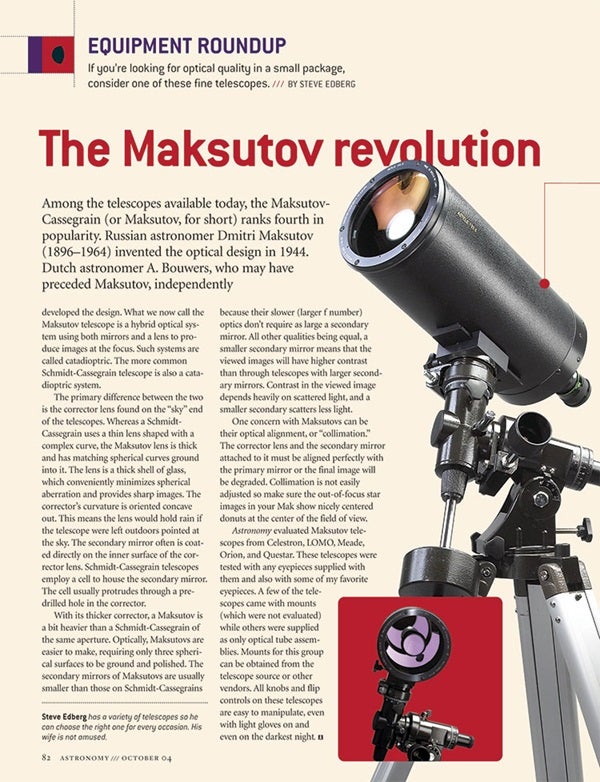
This review, “Meade’s new 14-inch SCT: an instant classic,” appeared in the October 2004 issue of Astronomy magazine.
Among the telescopes available today, the Maksutov-Cassegrain (or Maksutov, for short) ranks fourth in popularity. Russian astronomer Dmitri Maksutov (1896-1964) invented the optical design in 1944. Dutch astronomer A. Bouwers, who may have preceded Maksutov, independently developed the design. What we now call the Maksutov telescope is a hybrid optical system using both mirrors and a lens to produce images at the focus. Such systems are called catadioptric. The more common Schmidt-Cassegrain telescope is also a catadioptric system.
The primary difference between the two is the corrector lens found on the “sky” end of the telescopes. Whereas a Schmidt-Cassegrain uses a thin lens shaped with a complex curve, the Maksutov lens is thick and has matching spherical curves ground into it. The lens is a thick shell of glass, which conveniently minimizes spherical aberration and provides sharp images. The corrector’s curvature is oriented concave out. This means the lens would hold rain if the telescope were left outdoors pointed at the sky. The secondary mirror often is coated directly on the inner surface of the corrector lens. Schmidt-Cassegrain telescopes employ a cell to house the secondary mirror. The cell usually protrudes through a predrilled hole in the corrector.
To continue reading this review you need to be an Astronomy magazine subscriber.
Subscribers have full access to our equipment review archive and many other great online benefits.
Already a subscriber? Simply log in or create an account below.









